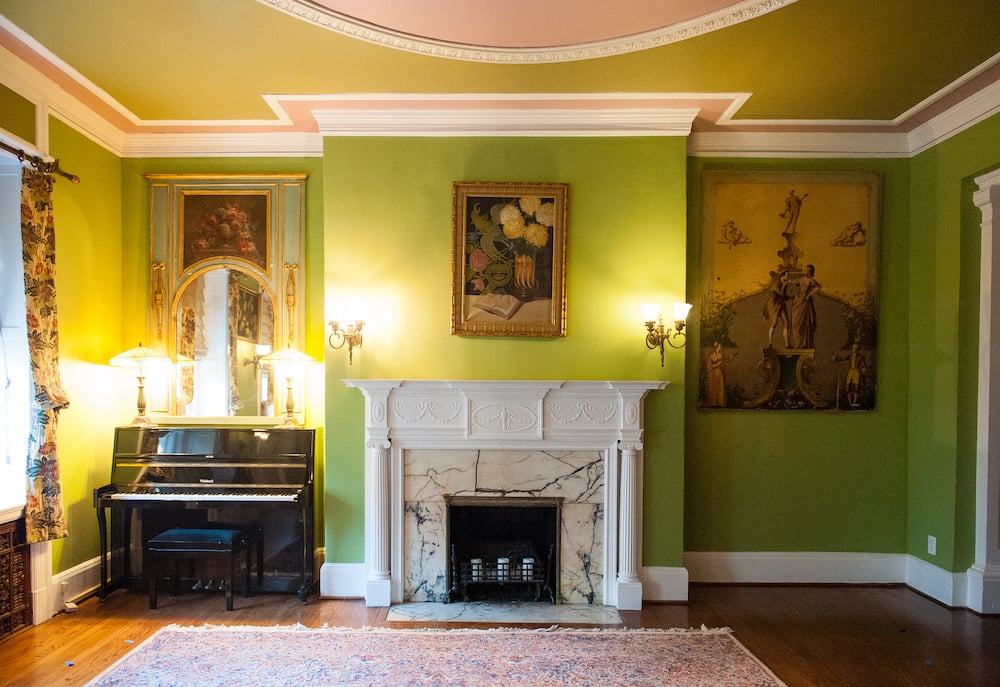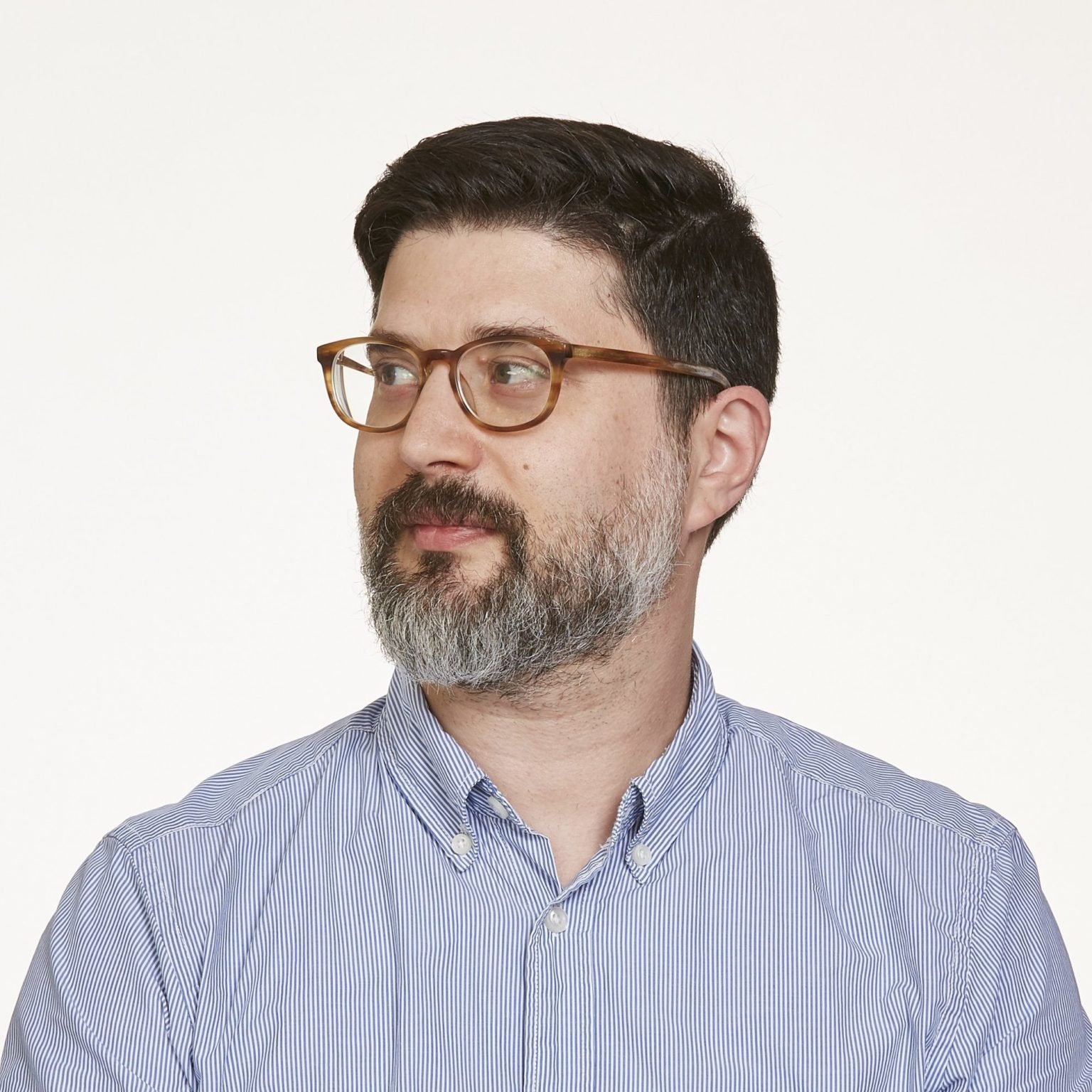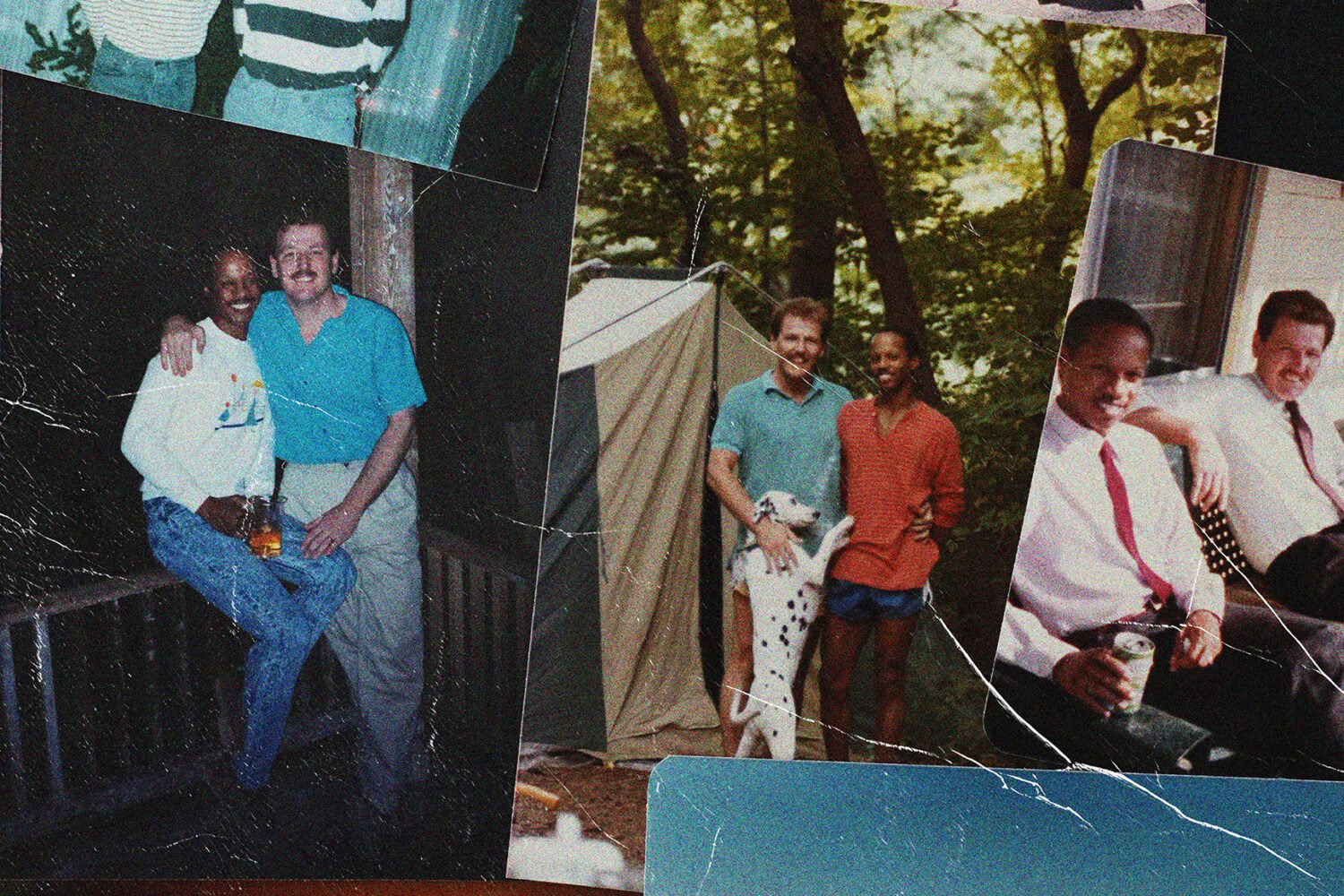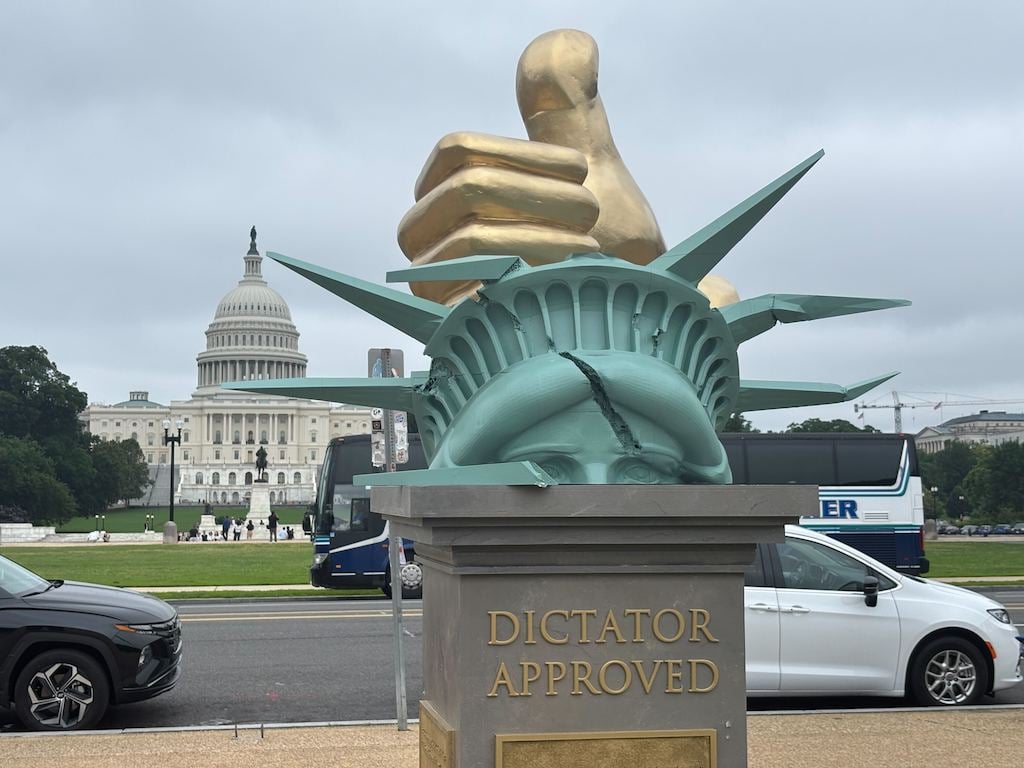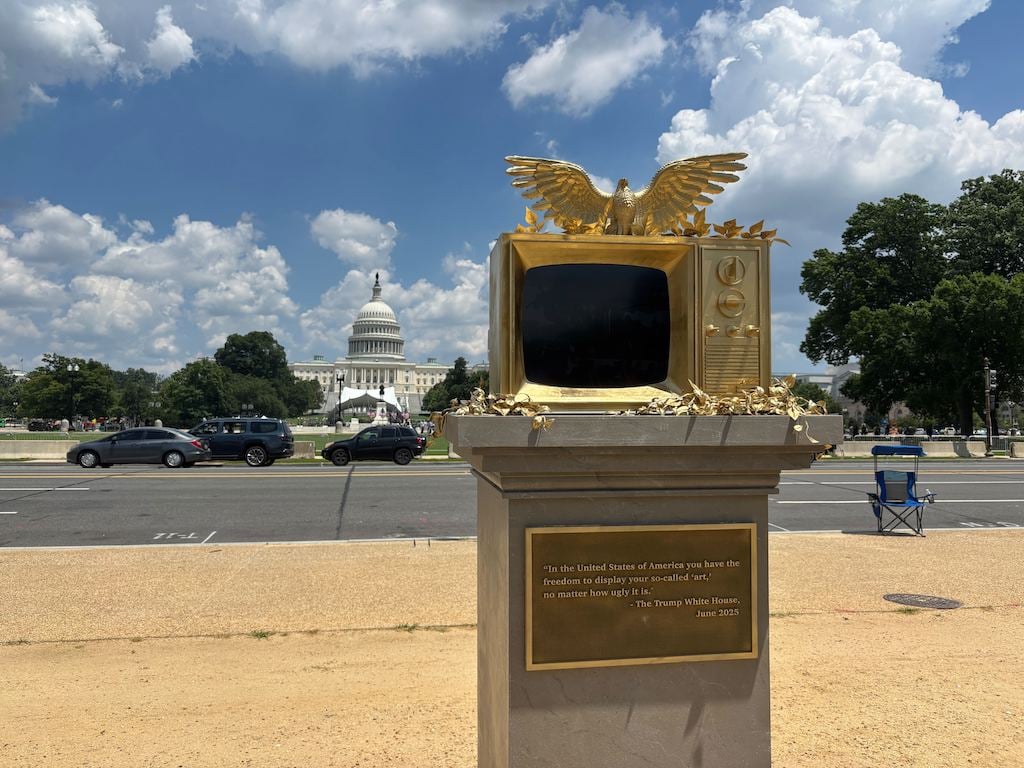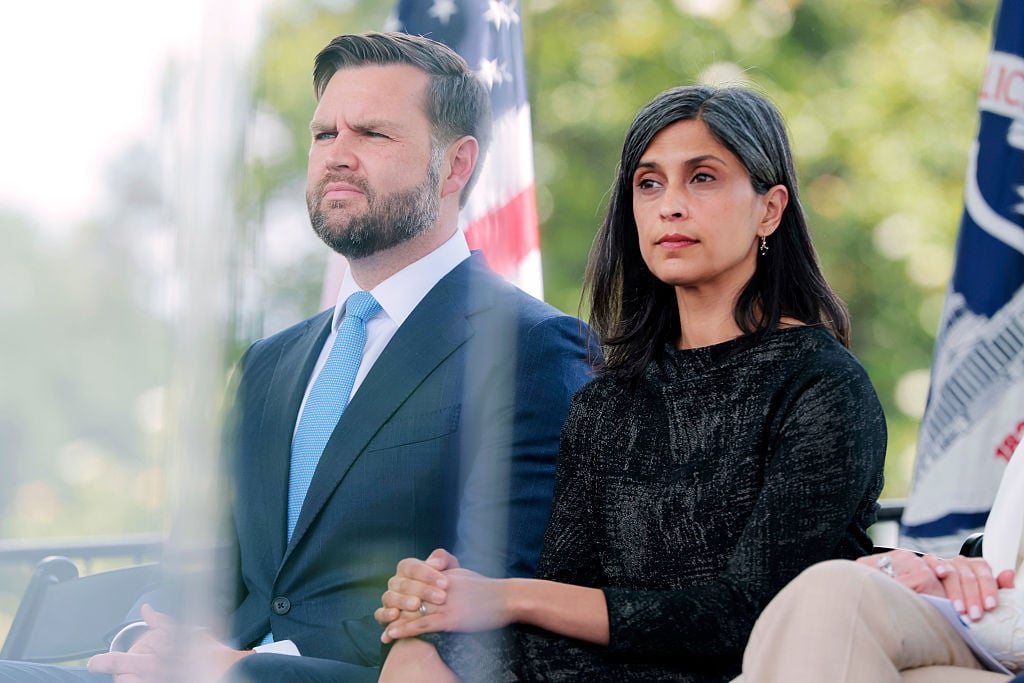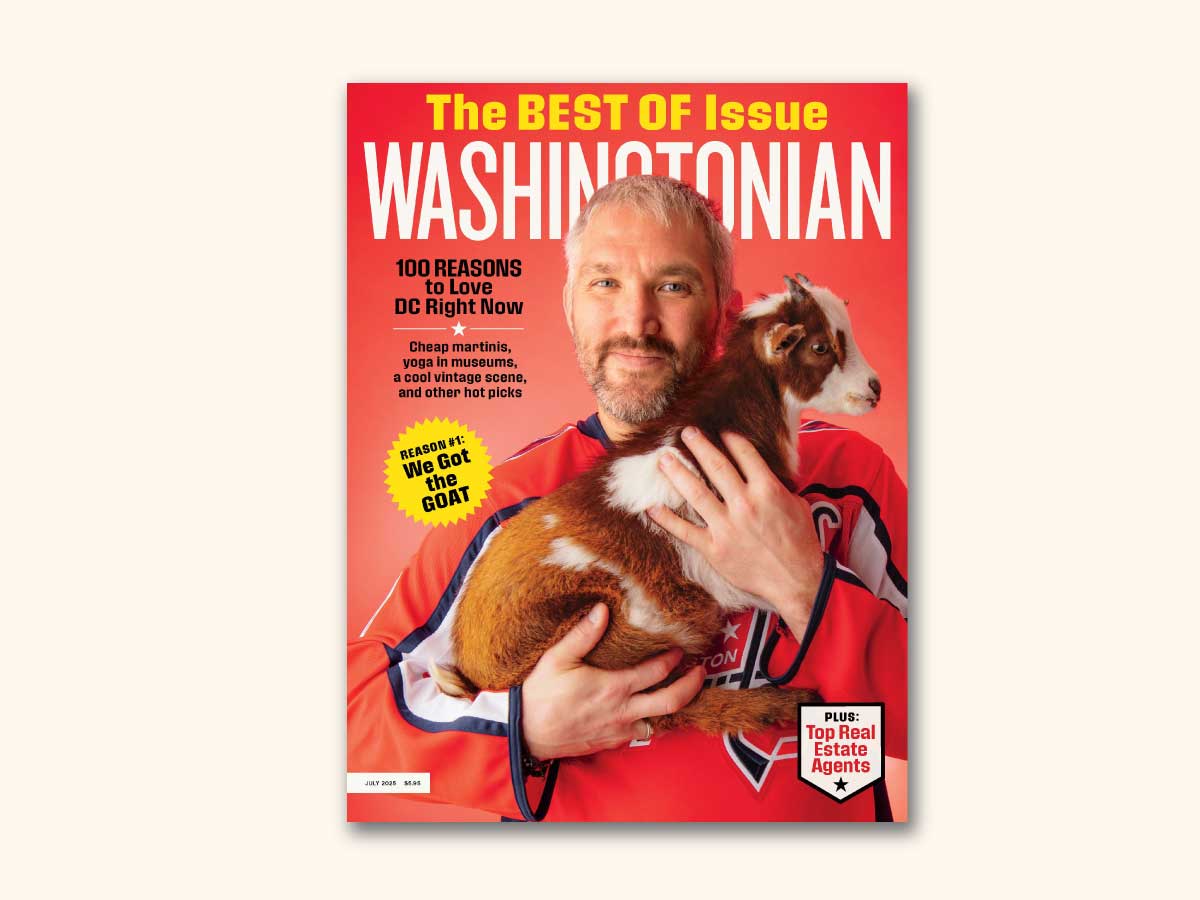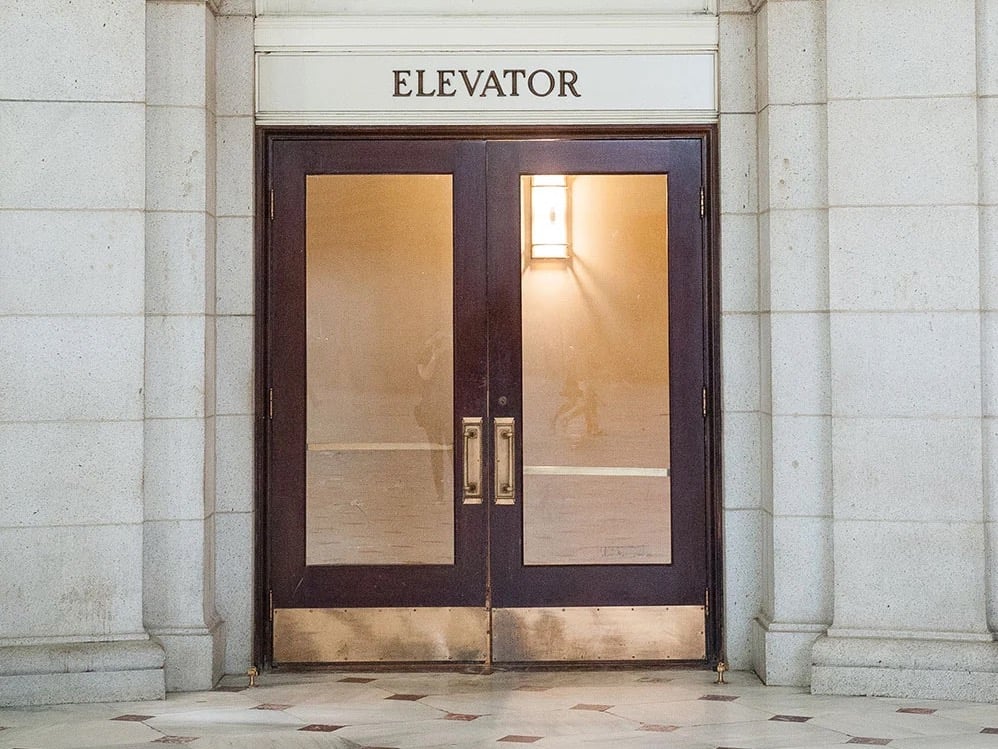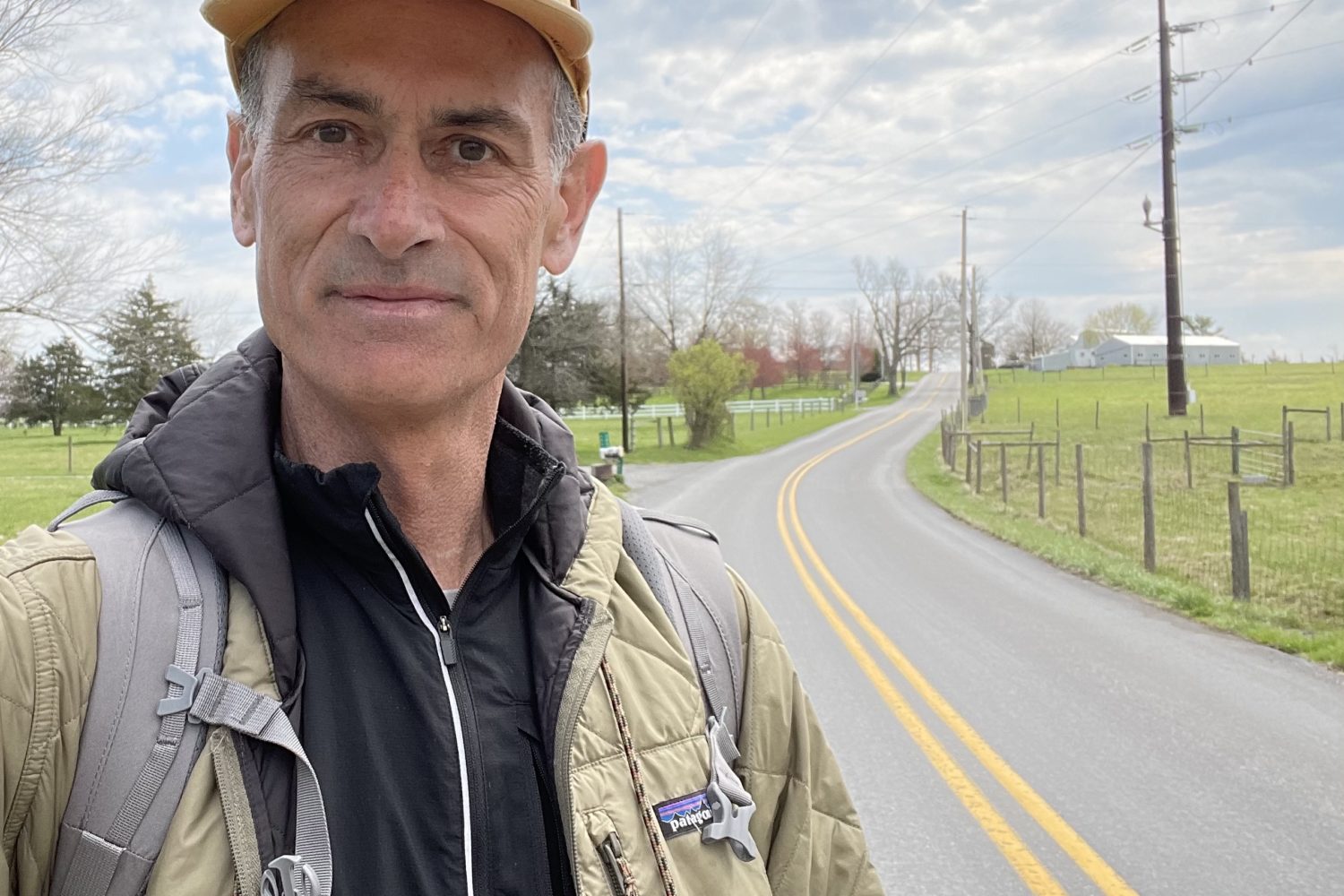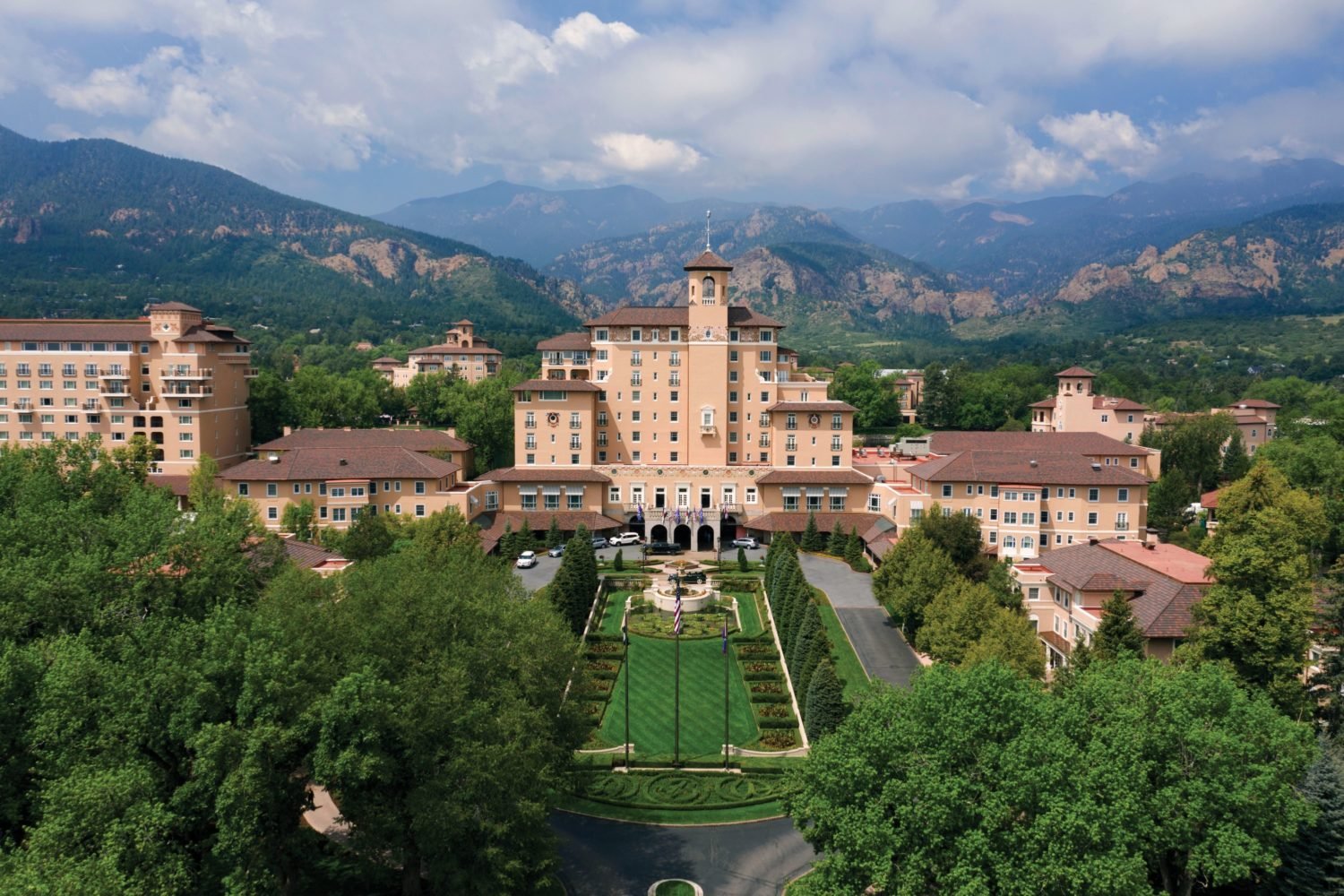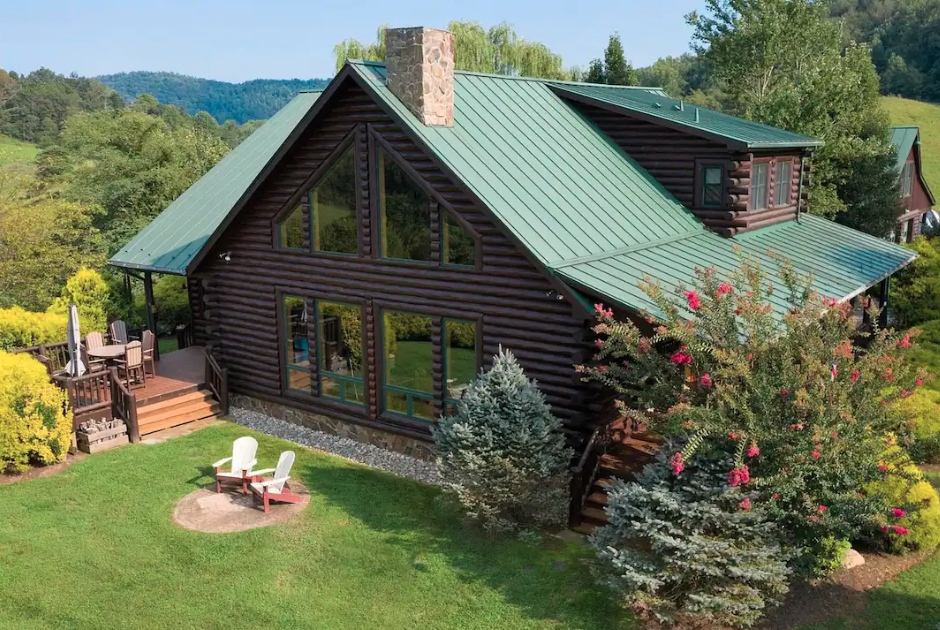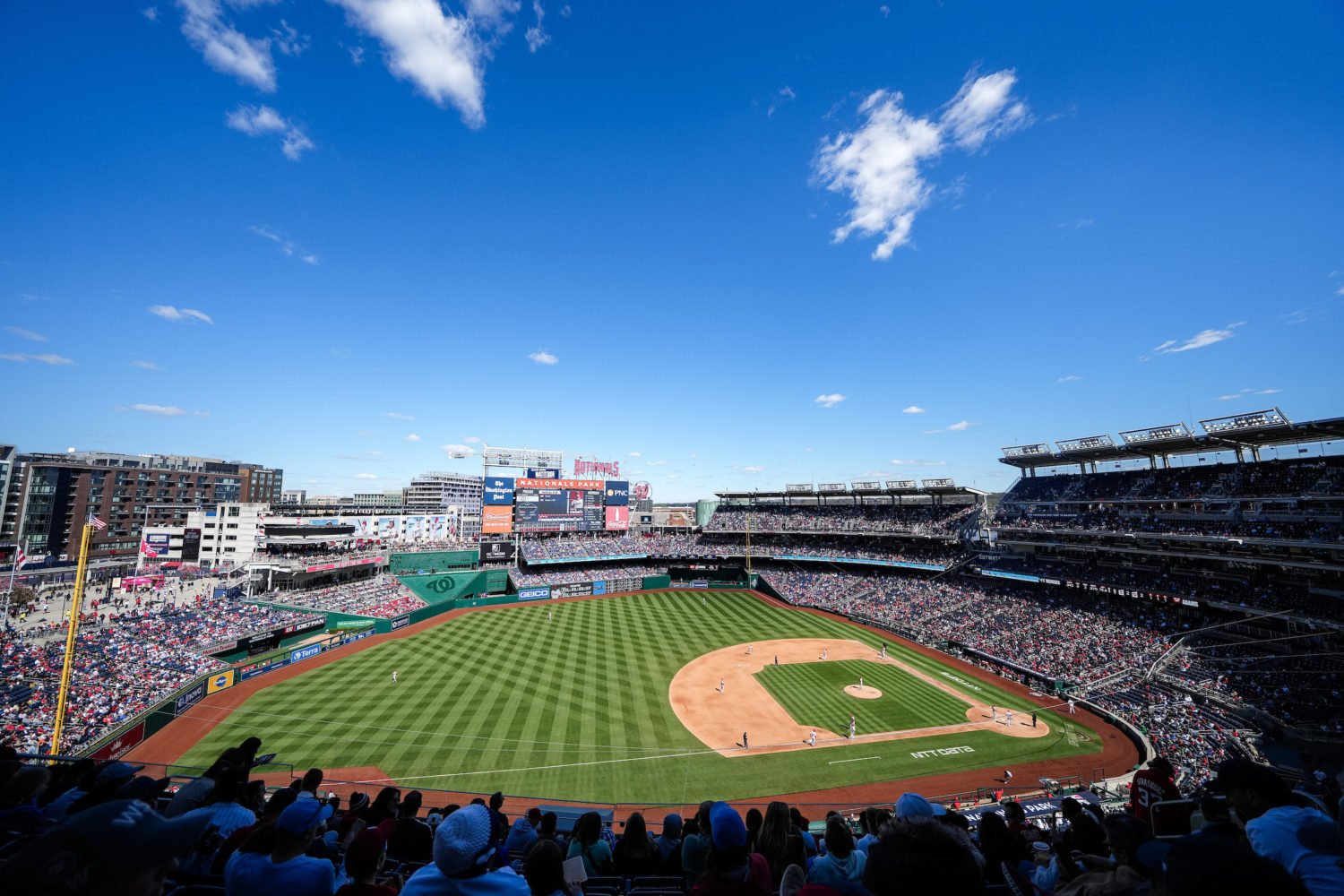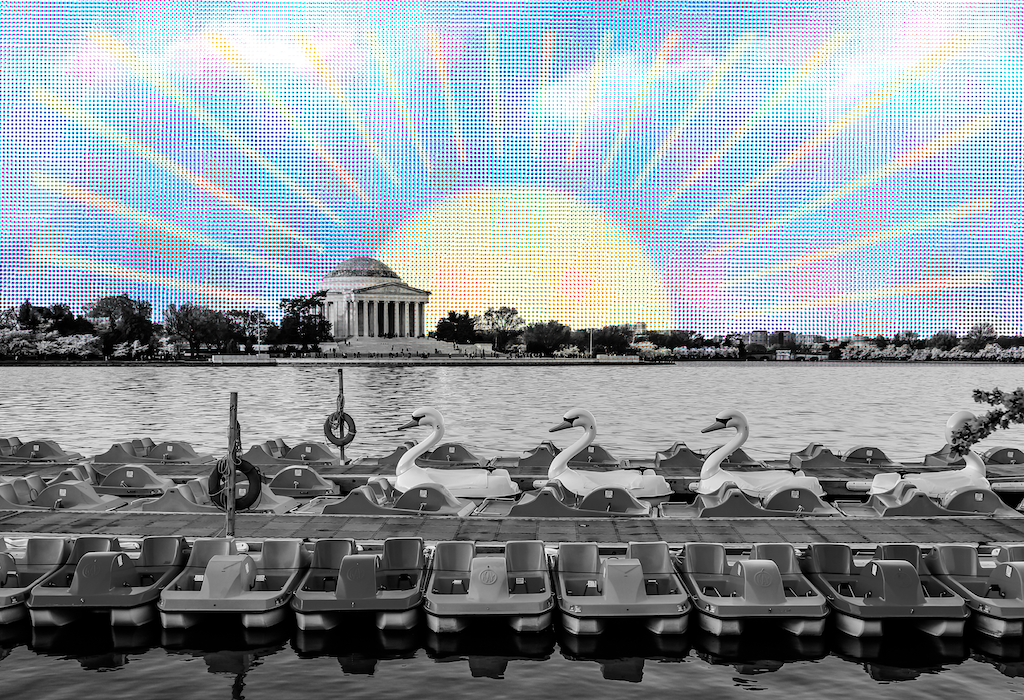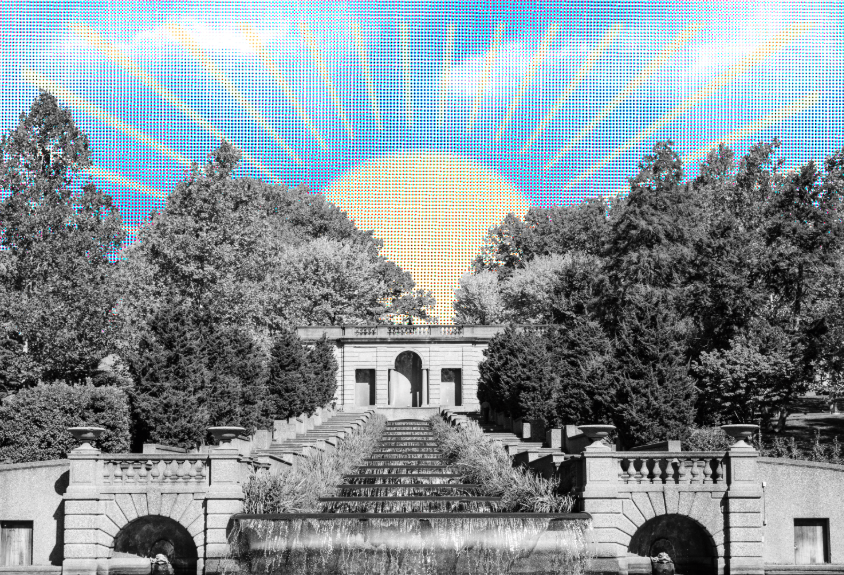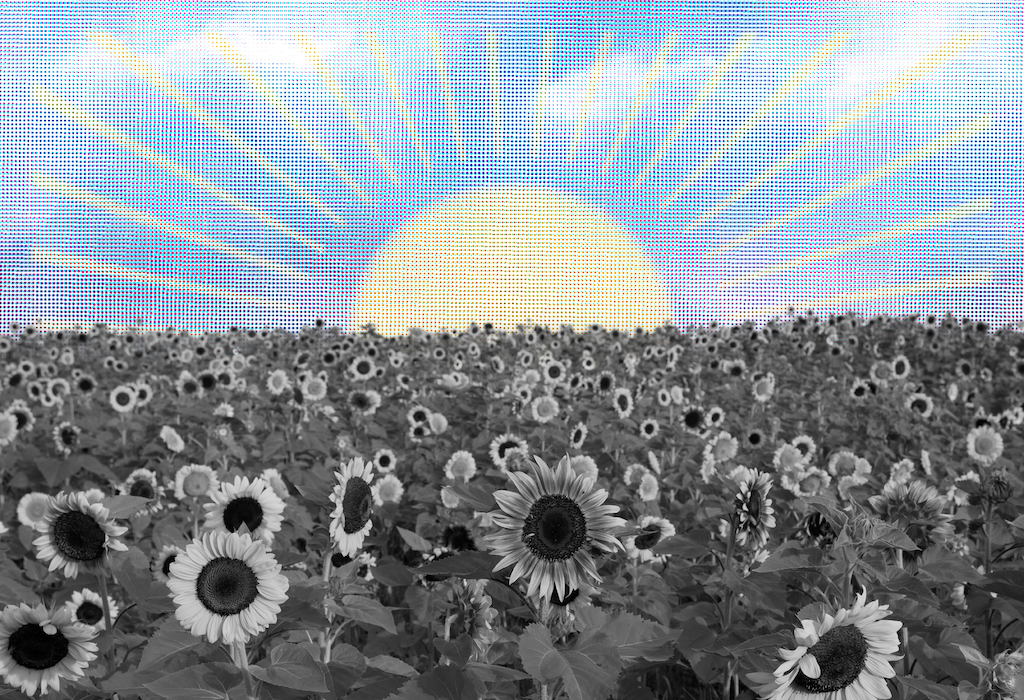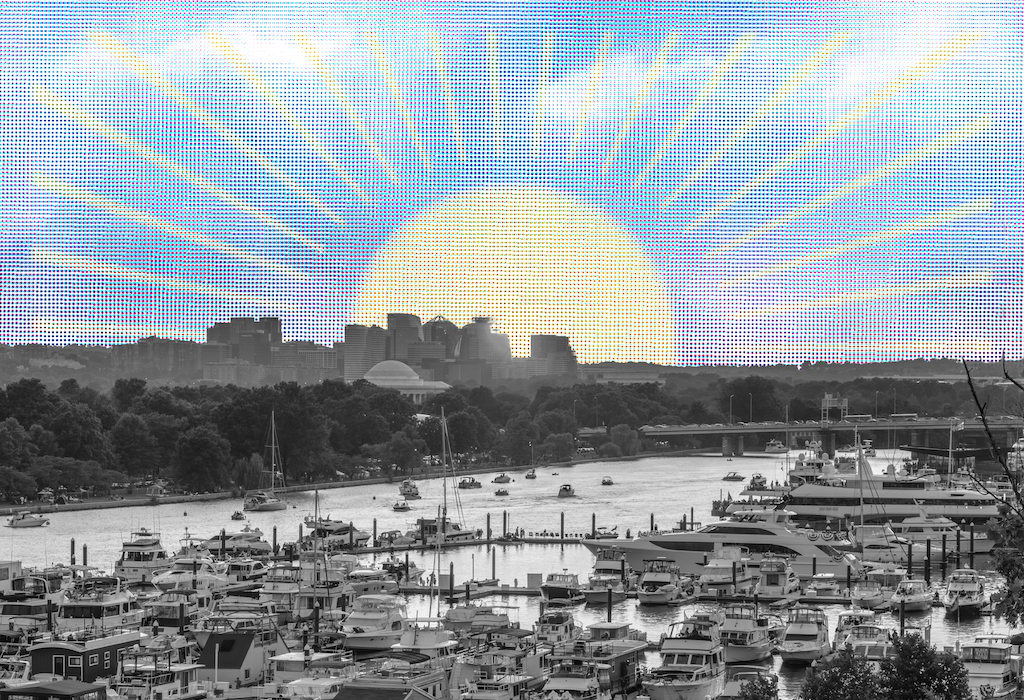Accidentally Wes Anderson is a best-selling book, an image-packed website, and a super-popular Instagram feed, all devoted to photos of locations around the world that look—as the title suggests—like they came straight out of a Wes Anderson movie. The book, which came out in October, quickly sold out, leading to weeks-long waits for eager fans.
Because of the pandemic, the couple behind AWA, Wally and Amanda Koval, were forced to scrap a year’s worth of travel (they’d planned trips to Scotland, Spain, France, and Texas, among other places); instead, they started making excursions to places within driving distance of their Brooklyn home. “We’ve been saying we traded our world map for a road atlas,” Wally says. So last fall, about a month before the book hit stores, the Kovals headed down to DC. Below, check out our conversation with Wally, along with some outtake images from their trip. They’re sharing the results of their DC excursion on Instagram this week, so to see more, head over to AWA. They’re also planning to return to DC at some point for a pop-up, pandemic permitting.
The book such a fast hit that it was very hard to get a copy early on. Why you think it connected so much?
We’re exploring places that look like they’re from a Wes Anderson film, but really we’re exploring these places that are just on the edge of fantasy—they are real places and have real stories about real people. It provides a moment of delight. If you’re interested in planning your next adventure, cool. If you want to do a little armchair travel, cool. If you’re just interested in flipping through pretty pictures, awesome. We never could have planned for it to come out during the tough time that it did, but in the past—before the world fell into a volcano—we had utilized AWA to plan our next adventure. Now, it got us through a time when we could not necessarily go anywhere. So it was serendipitous that it came out when it did, I think.
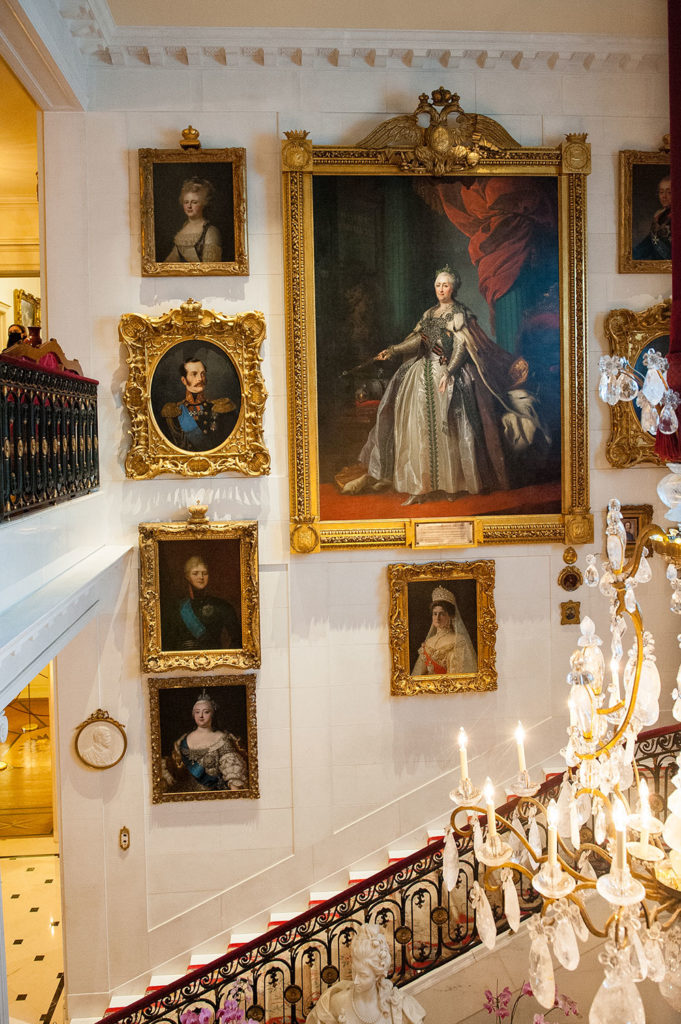
Part of what’s fun about your site is the sort of mindfulness aspect of it: It makes you look at things differently and notice things.
Wes Anderson’s name is on it, but [part of what we want is for people] to just to look, to open your eyes a little further and allow yourself to see things through a slightly different lens. People will say, “Oh, I I pass by here all the time. I never thought I would see it on AWA.” You didn’t allow yourself to see it.
So you came to DC. How does Washington rate in terms of Wes Anderson-ness? How Andersonian of a city are we?
Oh, dude, you’re in the top percentile, that’s for sure. There’s so much we could have captured if we had more time. We’re going to have to come back down. When people say, “Ah, I’ve been to DC….” Have you? Have you really? There’s a lot.
What did you see while you were here?
We went to the Hillwood Estate, the Renwick, and the Portrait Gallery. We explored some interesting fire stations, the [Mansion on O Street], the Tabard Inn, the Larz Anderson House. We do our own research beforehand and obviously reach out to the community to help us along. A lot of this is serendipitous. You saw the video on our Instagram of a gentlemen sitting in Union Station opening a map. I didn’t direct that. I didn’t ask anybody to get out of the way; I didn’t plan that. That just happens, right? You allow yourself to be in that space, to spot it and capture it. Our goal when we go on an adventure is to get the community involved, because they are the best tour guide. AWA always aims to go beyond the top 10 list. And how do you do that? Well, you ask people who live there.
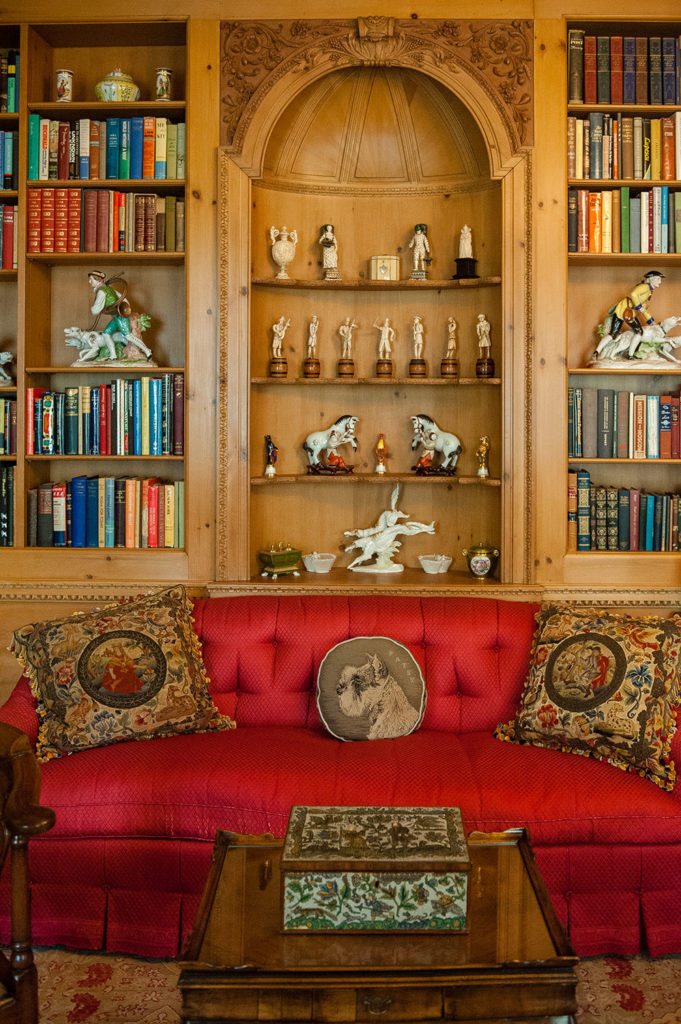
There aren’t any images of DC in the book. Did you consider anything from here that almost made the cut?
We did. [A photo of] Union Station was a contender. I think Union Station in DC got beat out by Union Station in Seattle. In the book, we started with 15,000 photos and whittled it down over the course of almost a year to 200. It was difficult. My publisher said we had to kill a lot of darlings. I was like, “Yes, I did. So, so many.” We get we get around 2,000 to 2,500 submissions every month on the website—just people coming to the website and uploading their photo and telling us a little bit about it. We open and examine every single photo that comes through.
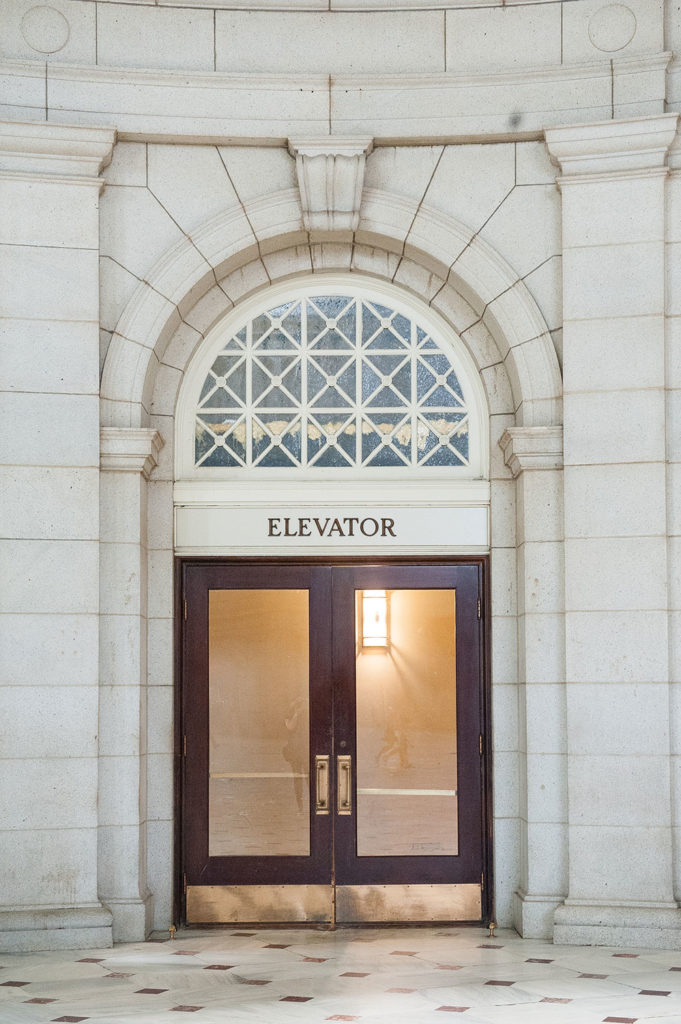
Right, most of the AWA photos come from your audience. What advice do you have for readers who might want to submit DC pics to you? Obviously, color is big. And the extreme symmetry thing is like AWA 101. But is there other stuff that people should look out for?
It doesn’t have to be perfectly symmetrical. You know, there are a lot of interesting nostalgic things: a phone booth or these these mechanical apartment buttons that we saw—just things that are old-school, so to speak. You don’t need to be a photographer, and you don’t need anything other than a smartphone. Probably 40 or 50 percent of the photos in our book came from an iPhone or an Android. You don’t need to be a professional photographer.
People say, “I walk by this building all the time and I never thought it was AWA.” But at the time that somebody walked by it [and took the photo that ended up on AWA], the wind hit just right, the sun was hitting the building in the right manner, and it just caught them. In that moment, they grabbed their phone or their camera. There’s something that’s captured when you feel it. And there [needs to be] an interesting story there. It’s a little quirky, a little curious, a little odd, and a little fun. And it’s something that wouldn’t necessarily get told otherwise. Having a story, that’s the No. 1. Without a story, no image is AWA.

